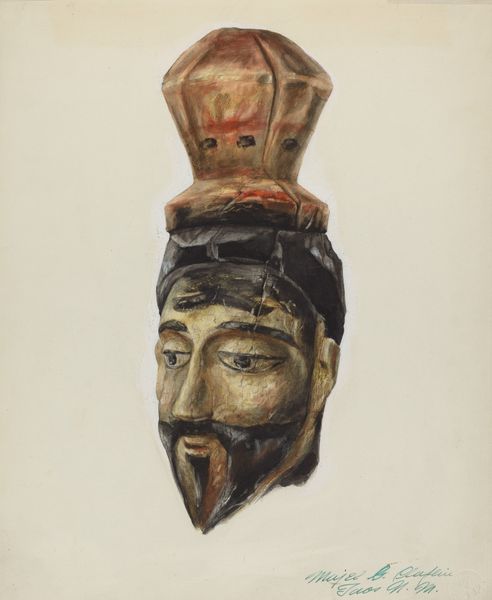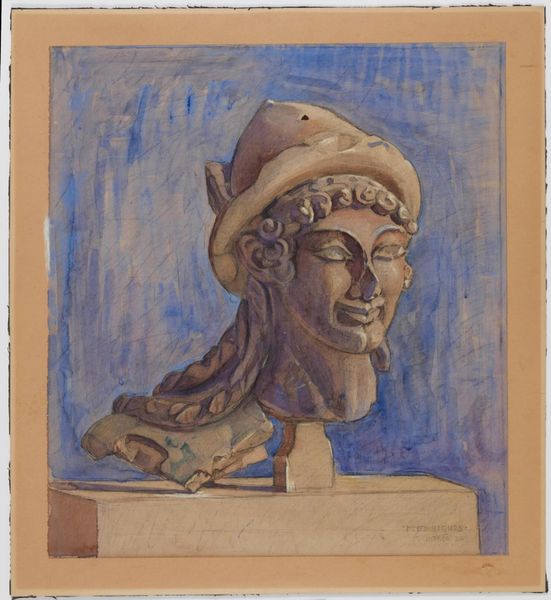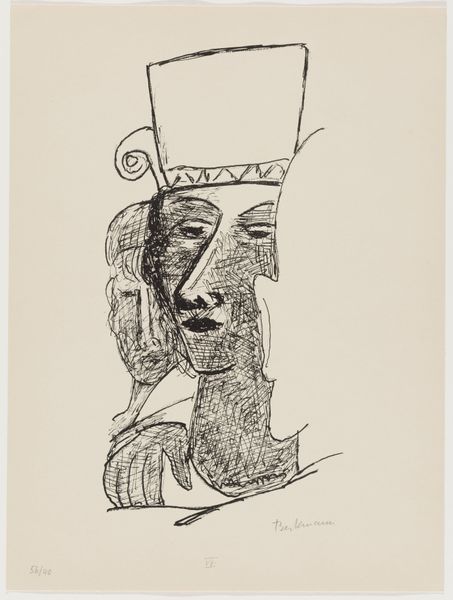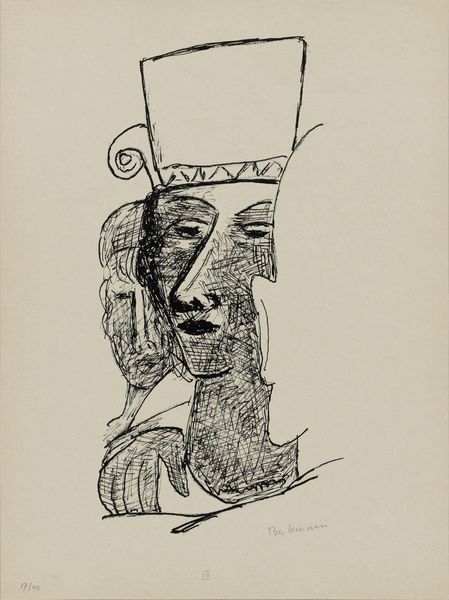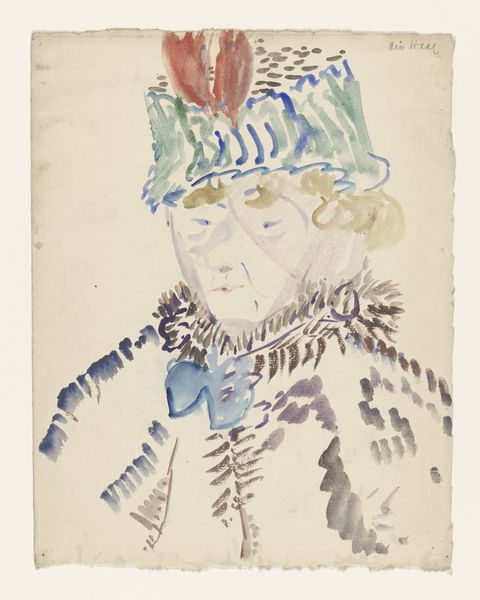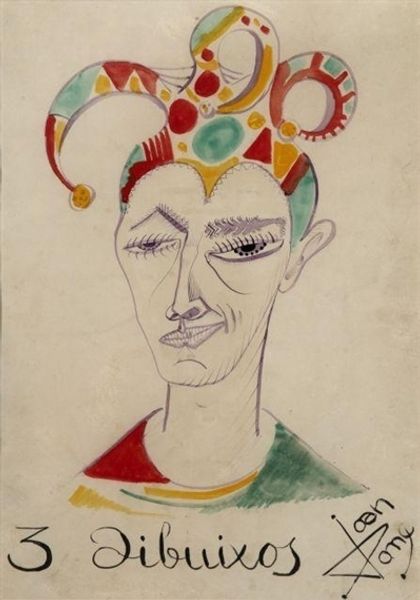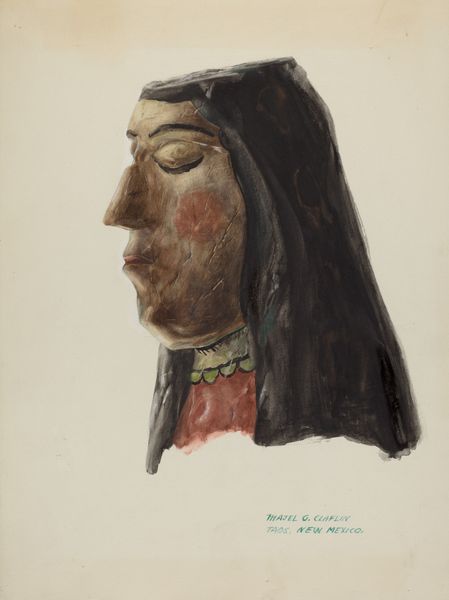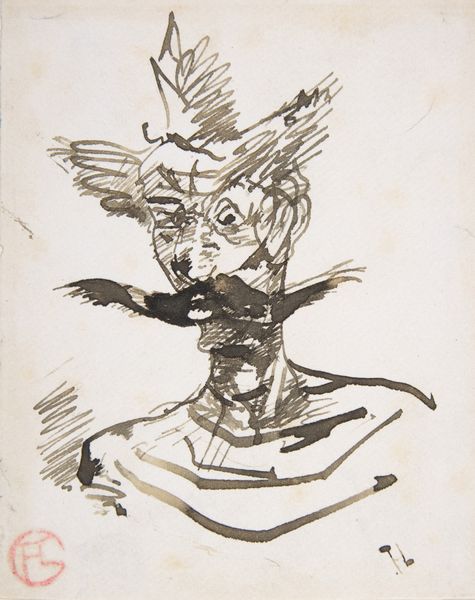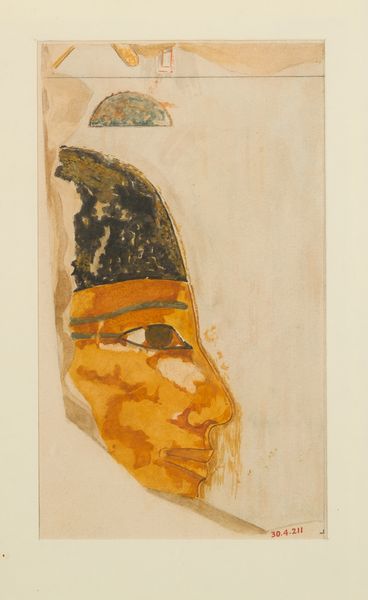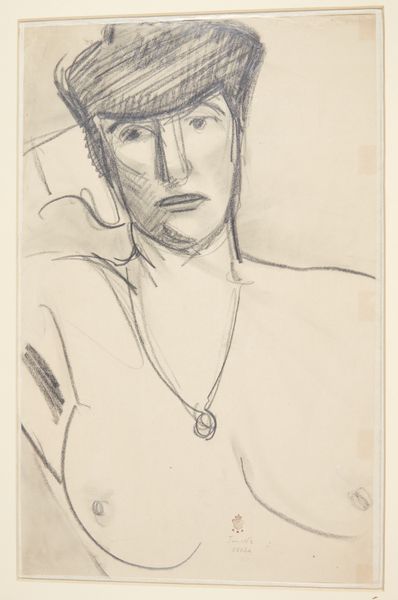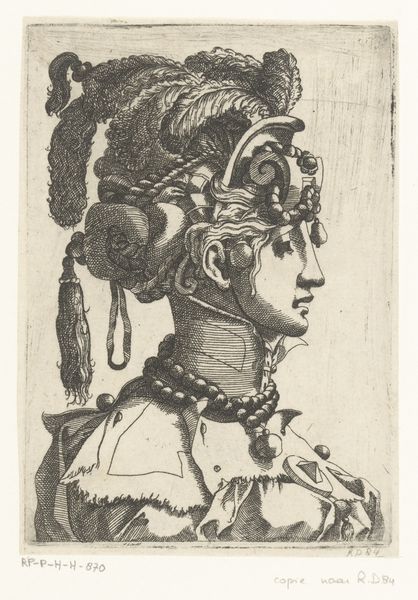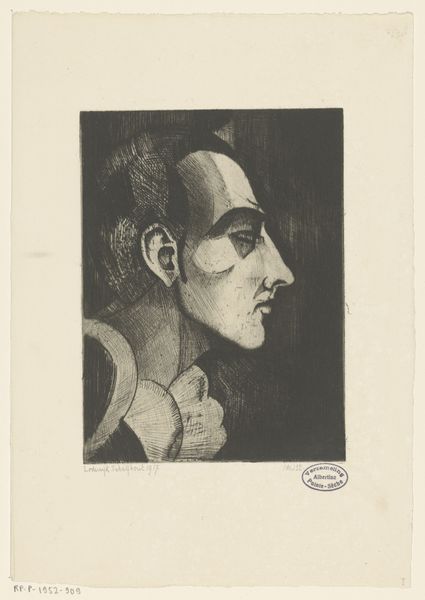
painting, watercolor
#
portrait
#
painting
#
figuration
#
watercolor
#
academic-art
Dimensions: overall: 35.8 x 27.9 cm (14 1/8 x 11 in.) Original IAD Object: none given
Copyright: National Gallery of Art: CC0 1.0
Editor: Here we have Majel G. Claflin's "Head of Carved Figure with Tin Crown," a watercolor from between 1935 and 1942. I'm immediately struck by the flatness and the profile view, giving it an almost ancient, artifact-like feel. What do you see in this piece? Curator: I'm drawn to the image’s reliance on established iconography. The crown, naturally, speaks of power and authority. Yet, its rendered quality of tin, cheap and mass-produced, clashes with the historical weight carried by the symbol of the crown itself. Does this contrast affect your perception? Editor: Definitely! It makes me think about the democratization of symbols, like maybe the artist is questioning who gets to wear a crown. Curator: Precisely! Claflin gives us this strange dichotomy, evoking folk art traditions with the carved figure and juxtaposing it with the ready-made quality of the tin crown. There is the face: austere, formal, removed. A modern saint? Editor: That's interesting - I hadn’t considered the folk art angle, but now I see how the roughness of the carving contrasts with the regality the crown is supposed to represent. I'm now viewing it through two different lenses at the same time. Curator: Think, too, about cultural memory and the role objects play. This artist is investigating the way humble materials transform our understanding of inherent and conventional concepts like power, authority, and legacy. Editor: So, even though the figure seems to be of a regal character, its cultural context actually highlights a sense of humility, subverting typical symbols? Curator: Yes! By examining the iconography and deconstructing our preconceived notions. It challenges us to look beneath the surface, question, and consider the complex narratives that visual symbols carry. Editor: Well, I came in thinking "ancient," and now I'm seeing something much more modern and layered. Thank you for shining a new light on what images and their composition symbolize, while changing our perspectives!
Comments
No comments
Be the first to comment and join the conversation on the ultimate creative platform.
